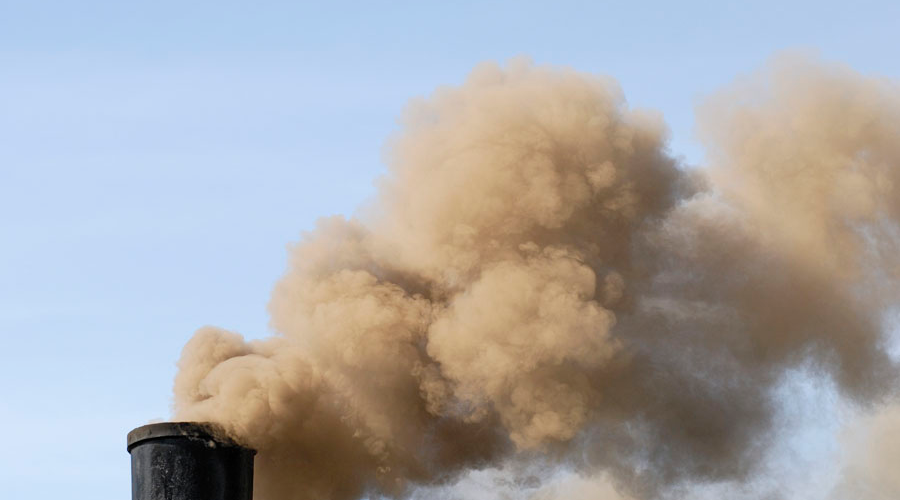The most harmful pollutant to human health is called PM 2.5, particle matter smaller than 2.5 microns in diameter that's found in soot, smoke, and dust. PM 2.5 is especially dangerous because it can get lodged in the lungs and cause long-term health problems like asthma and chronic lung disease.
PM 2.5 starts to become a major health problem when there is more than 35.5 micrograms (µg) of PM 2.5 per cubic meter of air, according to the Environmental Protection Agency. But the World Health Organizations recommends keeping yearly average PM 2.5 levels three times lower than that.
The most polluted cities on Earth have anywhere between 11 and 20 times that amount — based on the new WHO data from cities that collect it — and you might be surprised which make the top 15 list this year.
15. Kanpur, India - 115 µg/m3 of PM 2.5
Kanpur, India has 11 times the annual mean of PM 2.5 that's considered healthy. The pollution is attributed to industrial activity in the area as well as motor vehicles.
TIE 13. Shijiazhuang, China - 121 µg/m3 of PM 2.5
Shijiazhuang, the largest city in China's Hebei province, owes its high air pollution to industrial activity in the area. It's been so bad, in 2014 a man tried to sue the government over the smog in the city.
TIE 13. Dammam, Saudi Arabia - 121 µg/m3 of PM 2.5
Dammam, a city in Saudi Arabia's eastern province, is the sixth largest city in the country. Its high air pollution stems in part from the oil industry in the area.
12. Ludhiana, India - 122 µg/m3 of PM 2.5
Ludhiana is the first of six Indian cities to make the 15 cities with the worst air pollution. With a population of 1.6 million, the city has struggled with air pollution over the years as it has become more industrial.
11. Delhi, India - 122 µg/m3 of PM 2.5
Although Delhi topped the list according to 2015 WHO data, this year it fell out of the top 10 in part because of a decrease in the annual mean of PM 2.5. Its high pollution level is due to motor vehicles and nearby factories.
TIE 9. Baoding, China 128 µg/m3 of PM 2.5
Although China is known for its high-smog days, it only has two cities in the top 10 worst polluted in the world. Baoding's pollution comes from nearby factories using coal-powered machines.
9. Xingtai, China 128 µg/m3 of PM 2.5
Xingtai, also at an annual mean of 128 µg/m3 of PM 2.5, is also located in China's Hebei province. Often regarded as the city with the most air pollution in China, its high levels are due to the coal-burning factories.
8. Bamenda, Cameroon - 132 µg/m3 of PM 2.5
Bamenda, a hilly city in northwest Cameroon, was the only African city in the top 15. The air pollution there is in part attributed to rapid urbanization that's led to a lot of soil erosion.
7. Raipur, India - 144 µg/m3 of PM 2.5
Raipur, a city in central India, is the fourth most polluted Indian city in terms of average PM 2.5 levels. The reason for the high pollution is coal-powered plants and aluminum and steel production.
6. Patna, India - 149 µg/m3 of PM 2.5
Patna, the second-largest city in eastern India, is a major agricultural trade center, suffers from high pollution in part because of transportation, power generation and other industries.
5. Al Jubail, Saudi Arabia - 152 µg/m3 of PM 2.5
Al Jubail is an industrial city on the Persian Gulf. Because of its rapid industrialization in the 1970s, it has a high amount of air pollution that's been noted since the 1980s.
4. Riyadh, Saudi Arabia - 156 µg/m3 of PM 2.5
Riyadh, the largest city in Saudi Arabia also clocks in as its most polluted, with 15 times what a healthy annual PM 2.5 should be. The city attributes the high pollution days in part to sulfur dioxide in the air, which predominantly comes from industrial activity.
3. Allahabad, India 170 µg/m3 of PM 2.5
Allahabad, a city with almost 1 million people, joins the list in the #3 spot. The city is near the Ganges river, which often dries up, releasing dust into the air.
2. Gwalior, India - 176 µg/m3 of PM 2.5
Gwalior, a historic city about 200 miles south of New Delhi, is the Indian city with the worst air pollution both in terms of PM 2.5 and 10, according to the WHO. The Times of India attributes Gwalior's bad air pollution to coal-powered plants, cars, and inefficient energy use in buildings.
1. Zabol, Iran 217 µg/m3 of PM 2.5
Zabor, Iran, which has an annual mean that's more than 20 times higher than what the WHO considers healthy, attributes some of the high air pollution to wetlands that are drying out as the reason for the dust in the air.
Source: World Health Organization









